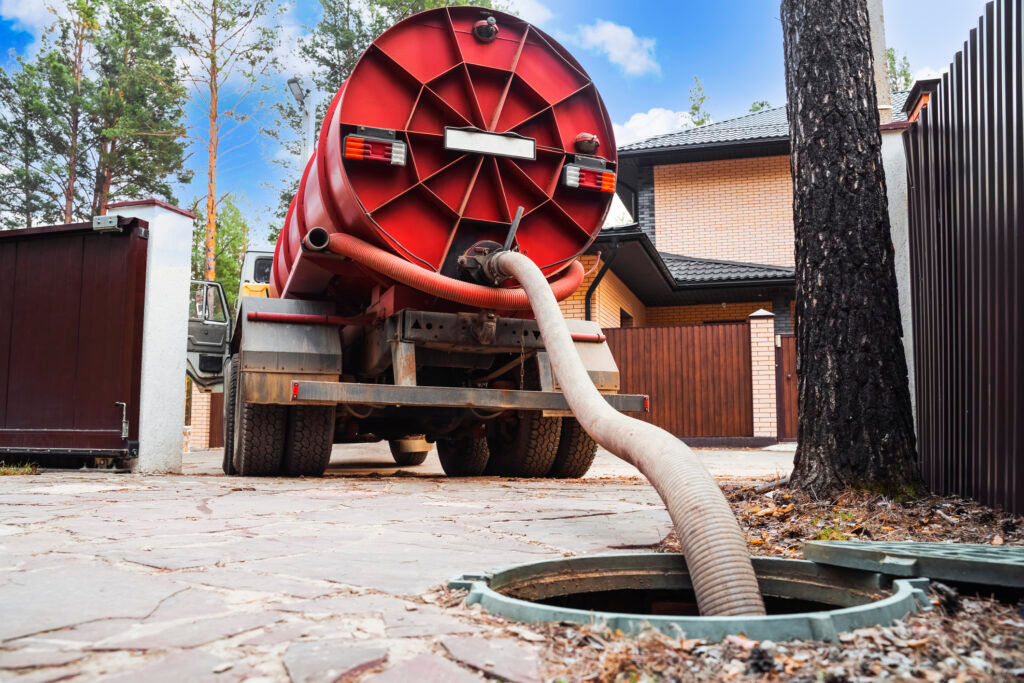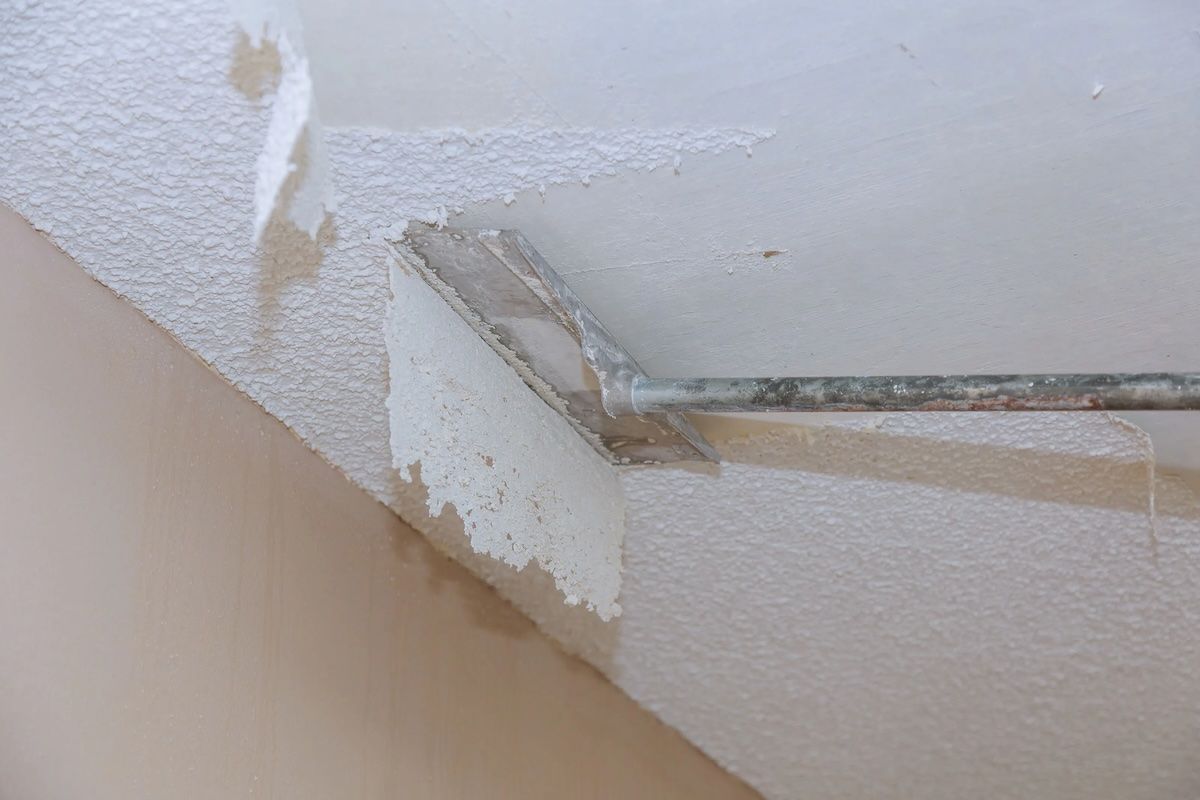You Got to Pump It Up…Pumping a Septic Tank
Click here to browse our Real Estate Agent Directory and contact top-rated agents in your area!

Septic tank maintenance should never be an afterthought for homeowners. But let’s face it, discussing septic tank pumping costs probably isn’t your favored dinner topic. Maybe not until you’re elbow-deep in a crisis that regular maintenance could have avoided.
Whether you’re dealing with an urgent problem or planning smartly, understanding the potential costs of septic tank pumping is essential.
We will discuss what factors can drive these costs up or down and how to anticipate them without breaking the bank.
Dive into the murky world of septic tank pumping costs and surface with a clear understanding of what to expect to pay. It’s less scary than you might think!
The cost of pumping a septic tank can vary depending on various factors, such as the size of the tank, location, accessibility, and local market rates.
On average, homeowners can expect to pay between $200 and $600 for septic tank pumping. However, getting quotes from local septic service providers for an accurate estimate based on your specific circumstances is recommended.
From being a homeowner and Realtor for numerous years, my personal experience has been to pay around $275 for a routine pumping.
I have pumped my septic tank on average every three years to keep up with proper maintenance. The cost of replacing a septic system is significant, so regular pumping is crucial for homeowners.
Let’s examine everything you should know.
If you’re feeling hesitant, just listen to Pump It Up for inspiration.
What is Septic Tank Pumping?
Septic tank pumping is an essential maintenance task for homes or buildings that rely on a septic system for wastewater treatment. Over time, solid waste and sludge can accumulate in the septic tank, reducing capacity and efficiency.
Pumping involves removing these accumulated wastes from the tank to ensure proper functioning. A professional septic tank pumper typically uses a vacuum truck to extract the solids and liquids from the tank. It prevents potential issues like backups, odors, and system failure.
It is recommended to have septic tank pumping done every 3-5 years. However, the frequency may vary depending on household size and water usage.
Several excellent reasons to clean a septic tank include increasing the system’s lifespan.
Average Cost of Pumping a Septic Tank
Septic tanks are an integral component of the plumbing system in many homes and commercial properties. However, like any other component, they require maintenance to function optimally.
Regular pumping is necessary to prevent clogging and overflowing. But how much should you expect to pay for septic tank pumping services? On average, homeowners spend between $295 to $610 for standard pumping services across America.
Of course, the exact amount you’d pay might vary depending on several factors, like location, the size of your tank, and its condition.
Some vendors charge customers by the hour and per worker, while others offer a flat rate that reflects their expertise and experience. Some providers may even have separate fees attached to extra services such as inspection or cleaning.
Bearing this in mind, let’s take a look at DIY vs Professional pumping costs.
- According to a report by HomeAdvisor, the national average cost for pumping a septic tank ranges between $288 and $556 in 2024.
- A study by the US Environmental Protection Agency (EPA) indicates that the pumping frequency depends on the tank’s size, affecting long-term costs: smaller tanks should be cleaned every 3-5 years, while larger tanks can go longer.
- A recent survey by Angie’s List revealed that unexpected septic tank repairs or replacement can cost homeowners between $5,000 and $30,000 or more depending on damage severity and local regulations, illustrating how routine maintenance could save far more in the long run.
DIY vs. Professional Pumping Cost
One way to significantly reduce your septic tank pumping costs is by opting for a DIY approach instead of hiring professional help. While it might seem like an excellent way to save money, its potential risks and limitations are worth considering.
Think of it as repairing a leaky faucet without prior plumbing experience. Sure, you can patch things up temporarily, but the chances are high that you’ll eventually exacerbate the problem.
Inexperience aside, it’s crucial that most municipalities only permit licensed professionals to handle septic waste disposal legally. Attempting it yourself could lead to fines or even higher pumping costs if done incorrectly.
While undertaking a DIY project might seem attractive due to perceived cost-cutting benefits, going for the professional option could save you more money in the long run by preventing further repairs down the road.
There are exceptions when settling for a professional isn’t feasible due to cost or location constraints.
Most people don’t go this route.
Adhering strictly to safety guidelines and ensuring proper disposal procedures is essential.
Factors Affecting the Pumping Cost
Septic tanks are integral to any septic system, and regular maintenance is essential to keep them working effectively. Proper maintenance can help you avoid costly repairs and replacements, making it necessary to understand the factors influencing septic tank pumping costs.
Two primary factors affect the cost of septic tank pumping: the size and condition of the tank and its location.
Let’s look at each of these in depth.
Size and Condition of the Septic Tank
The size of your septic tank plays a crucial role in determining its cleaning frequency and associated cost. Small tanks require frequent servicing since they fill up much quicker than their larger counterparts.
A typical household’s average tank capacity ranges from 1,000 to 1,500 gallons.
In addition to size, the tank’s condition also matters; older tanks may have corroded or rusted, causing leaks or cracks that could compromise functionality. These factors usually result in additional expenses as more time might be required to complete a job satisfactorily.
Moreover, damage to internal components like inlet pipes and risers will increase associated costs. Not only does this influence the amount of waste that gets into your drain field directly, but it also makes it difficult for professionals to find access points necessary for optimal service delivery.
Remember that regular maintenance is advisable not just for financial reasons but also for hygiene purposes. It’s essential to schedule routine checks with professional plumbers regularly to ensure effective septic systems operation.
Now that we understand how the size and condition of a septic tank affect pumping costs, let’s look at our second influencing factor: Location.
The Location of the Tank
The location of the tank can influence the cost of pumping. Generally, the cost to pump a septic tank is higher when the tank is located at a distance from the pumping truck or in an area that’s hard to access.
For instance, if your property has several obstacles like trees, rocks, or steep slopes that are hindering proper accessibility to your septic system, then the pumping company may charge you more.
In such cases, they may use specialized equipment or require additional personnel to complete the job. It’s essential to consider your location before contacting a service provider for septic tank pumping.
Pro tip: If you have a private well, scheduling an inspection simultaneously is a good practice. When you have a septic system, it is always wise to check the quality of the water.
Additional Charges to Consider
In addition to location and accessibility, there are other charges to consider when budgeting for septic tank pumping. These additional charges might include inspection fees and additional services required during pumping.
For example, if your system needs repairs or parts to be replaced during pumping, this will lead to additional charges. Inspection fees usually apply when an issue with your septic system is identified during pumping or from previous inspections.
These additional costs can add up quickly and significantly inflate your bill. It’s crucial to have an explicit agreement with the service provider beforehand.
To help put things into perspective, let’s explore some standard additional charges that you might encounter:
| Additional Charge | Average Cost |
| Inspection fee | $100-200 |
| Pump replacement | $400-800 |
| System repair fee | $500-1500 |
It’s worth noting that while you should try to minimize these additional fees if possible – especially for minor repairs – it’s essential not to compromise on the quality of service. Failing to repair or replace parts properly can lead to future damage, which will cost more.
Think of it like maintaining your car: while you might be reluctant to spend extra on minor repairs like oil changes, your neglect can lead to worse damage and higher expenses down the line.
Now that we have examined the additional septic tank pumping costs, let’s identify some equipment involved.
Materials and Equipment Involved
While it’s easy to see why anyone would need this service, understanding the equipment and materials used can help you make informed decisions.
Some essential materials needed during septic tank pumping are hoses, pumps, and tools such as shovels. Additionally, having protective gear like gloves, boots, coveralls, or aprons is essential to protect you from exposure to hazardous waste that may cause harm to your immune system.
Of course, if you’re like most folks, you’ll skip the DIY route.
However, if you can’t help yourself, it’s essential to know the relevant materials and equipment used in this process:
| Materials/Equipment | Purpose |
| Hoses | To transport waste from the septic tank into the disposal truck |
| Pump truck | A vacuum truck responsible for washing down and vacuuming up solid waste present within the septic tank |
| Safety gear (Gloves, goggles, coveralls) | To protect against exposure to hazardous material present within the septic tank |
Think of it like going hiking in adverse weather conditions. Just as you’d pack essentials like raincoats or sunscreens when planning your trip, it’s vital to have tools and protective gear ready for septic tank pumping.
Conclusion
Understanding the types of equipment and materials involved in septic tank pumping helps prepare you adequately for what to expect during service.
Protective gear helps your protection against toxic waste and any accidents that may occur in the process.
A vacuum truck and necessary hoses ensure optimal and efficient waste elimination from your septic tank.
Septic maintenance is a vital task that owners should never forget. Over the years, I have met numerous prospective home sellers who have yet to keep up with these tasks.
Some ended up paying between $20,000-$30,000 to replace their systems! Don’t be one of them.





